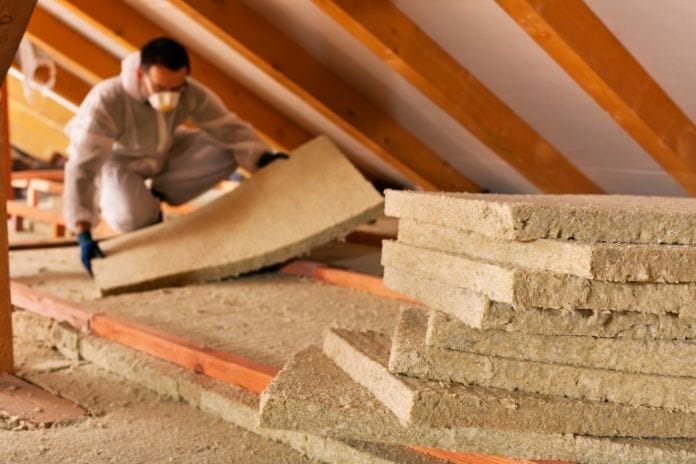When you’re adding insulation around the home, you need to know which material is the most effective for the price point and which one is safest to install. These common types of thermal insulation all have their pros and cons, and knowing their best and worst features can help you decide on the most appropriate use for them in your home.
Fiberglass
Possibly the most-used type of insulation available on the market, fiberglass minimizes heat transfer with its fine strands of glass, which are weaved into insulation material. It’s also notable for its very affordable price point. When compared to other materials that offer the same amount of insulation, fiberglass is typically the cheapest option.
However, with fiberglass’s ubiquity and affordability comes one of its major downsides: health hazards related to its material. If fiberglass is broken, it can release small shards and glass powder, which can cause damage to the lungs if inhaled.
Calcium Silicate
Created out of a mixture of calcium, silicon, and oxygen, calcium silicate offers a number of advantages. The first of these advantages is that calcium silicate retains its structural integrity even under exceedingly high temperatures. This insulation is also highly resistant to corrosion when moisture is present. However, due to the relative fragility of the material compared to other types of thermal insulation, calcium silicate runs the risk of breakage during installation.
Cellulose
Comprised of 75 to 85% of recycled paper fiber, cellulose is one of the eco-friendliest options when it comes to insulation material. The other roughly 15% of its makeup is constructed out of fire-resistant materials such as boric acid and ammonium sulfate. This resistance to fire, along with the fact that cellulose is so compact that it contains nearly no oxygen, results in this insulation’s ability to lessen the potential damage of house fires.
One drawback is that cellulose absorbs moisture easily. It can take a long time for the insulation to dry out, and when it does, it can be less effective as an insulator.
Each of these insulators has its strengths and weakness. Be deliberate in where you install them in your home to minimize the risk of breakage, insulation failure, and risks to your health.








































